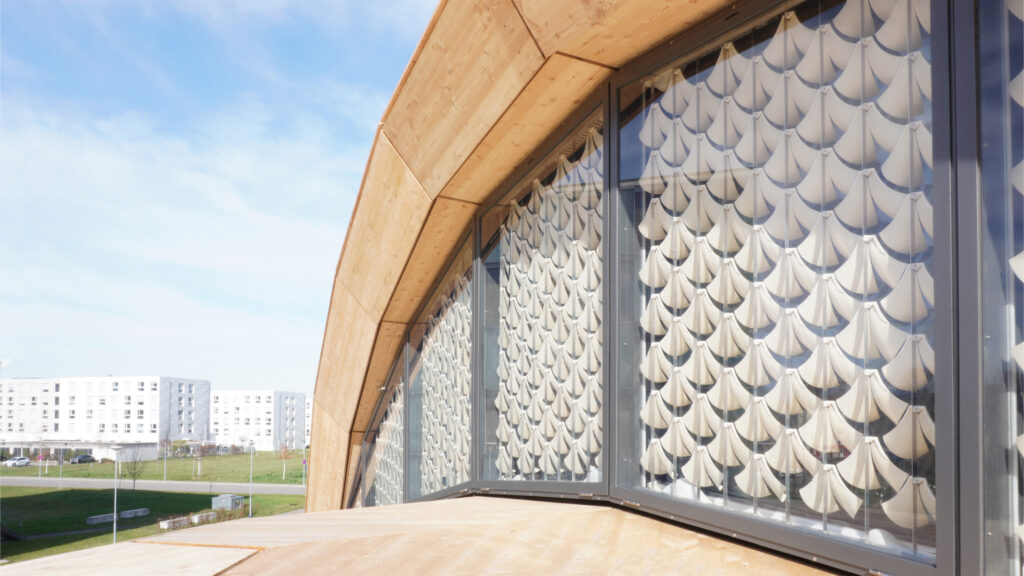Bio-inspired “Solar Gate” regulates buildings in a climate-neutral way

A research team from the universities of Freiburg and Stuttgart has developed an innovative façade system that adapts automatically to changes in the weather without the need for energy. Inspired by pine cones, the "Solar Gate" offers a resource-saving solution for sustainable building shading.
In nature, plant structures adapt intelligently to their environment, and these principles are now also being utilised in architecture. Researchers at the Universities of Freiburg and Stuttgart have developed the “Solar Gate”, a façade system that reacts to changes in humidity and temperature without the need for mechanical or electrical components.
This adaptive shading system was installed on the livMatS Biomimetic Shell, a research building at the University of Freiburg. It is based on hygromorphic materials that open and close independently like pine cones. As a result, the system lets sunlight into the building in winter for natural heating and protects against excessive heat in summer – completely energy self-sufficient.
4D printing enables intelligent façades
The secret behind the innovation lies in the combination of bio-based cellulose materials and state-of-the-art 4D printing technology. Cellulose, a renewable and abundant raw material, reacts to fluctuations in humidity by expanding or contracting. The research team has utilised this natural property to develop a two-layer structure that automatically adapts depending on the weather.
The elements produced using 4D printing curl up and open in high humidity, while they flatten and close in dry conditions. The “Solar Gate” thus offers a completely new way of regulating buildings in a climate-neutral way.
Energy-efficient construction of the future
The building sector is responsible for a large proportion of global CO₂ emissions. Buildings can significantly reduce their energy consumption for heating, cooling and ventilation using intelligent, bio-based materials. The “Solar Gate” shows how natural principles and modern manufacturing technologies can lead to sustainable architectural solutions.
With this innovative shading system, the researchers prove that sustainable construction methods can not only be environmentally friendly, but also efficient and cost-effective. The future of architecture could therefore be a great deal closer to nature.